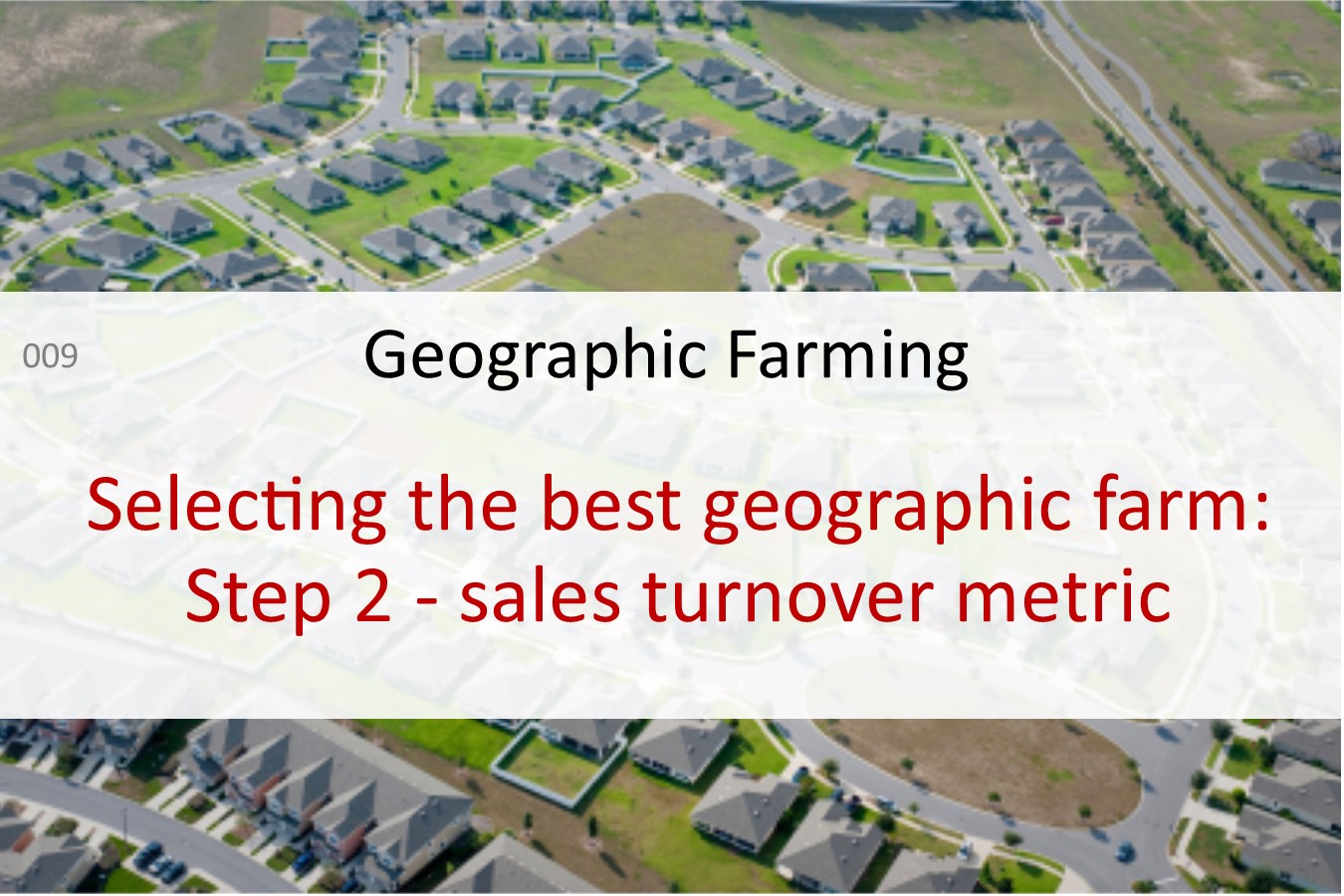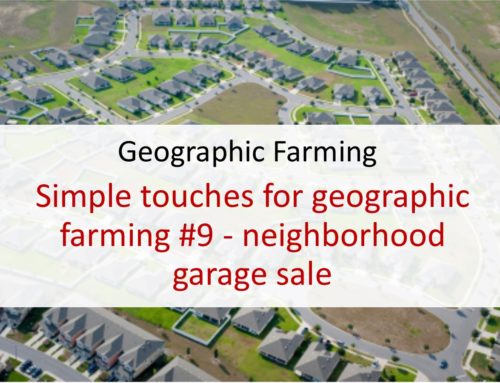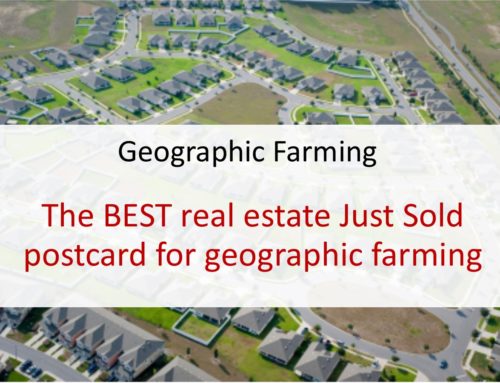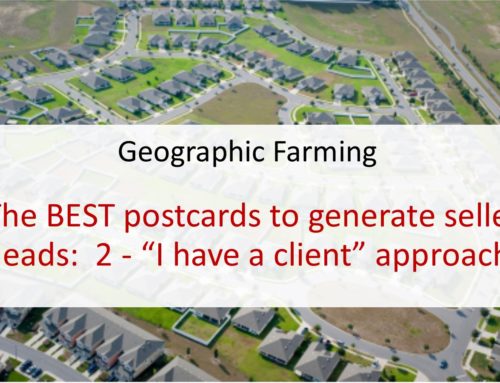Selecting the best geographic farm — Step 2. This second step in selecting a geographic farm makes it easy to compare multiple neighborhoods side by side to know which is best. Frequently you’re trying to compare “apples” to “oranges” with various neighborhoods. This process, called the “sales turnover metric,” makes it easy. Watch video to learn more.
RELATED POSTS
How to select the best geographic farm for real estate seller leads Part 2 – sales turnover rate
Picking the right geographic farm for real estate marketing is not all about turnover; there is one more thing. Here is the way you want to go about choosing a location when geographic farming. Identify those areas that you think you want to target based on price points, based on locality, based on anything else.
After identifying the areas you think you want to build your sphere of influence through geographic farming, make a spreadsheet. Include the farm name, the turnover rate, and the average sales as well as the prices in your spreadsheet. Including this information is key to successful geographic farming.
Maximizing geographic farming success by determining which locations will generate the highest amount of seller leads
Let’s say that I’ve got two geographic farms and they both are selling 50 homes a year. Let’s say they both have 10% turnover rates. That means that both of them are just as good as the other one for geographic farming, right? Not necessarily. When using geographic farming as one of your real estate marketing tools, you have to be sure you pick the right location for your farm by considering all variables.
Maybe one geographic farm is selling 50 homes a year with a 10% turnover rate at an average of $400,000 per sale while another one sells 50 homes a year, 10% turnover rate, at an average of $100,000 per sale. When choosing which location to begin geographic farming, you have to ask yourself which one is better? You’ll make 4 times more money with 4 times more motivated seller leads, all else being equal, in the geographic farm selling homes at an average $400,000.
Turnover rate as a starting point for choosing geographic farming locations
That’s easy to determine when you have the same turnover rate in a potential area for geographic farming. But what if you have a geographic farm that is producing a 3% turnover rate and one that is producing a 9% turnover rate and one that is producing a 5.5% turnover rate? And they all have different average sales prices? Which location should you choose to start geographic farming?
With these turnover rates, one may have an average $500,000 sales price, one may have a $200,000 average, and another one may have an average $350,000 sales price. Now you are asking, “How do I make any sense out of it?” In order to maximize real estate lead generation through geographic farming, you have to be able to figure out which location will make you the most money so that you maximize your investment in your real estate marketing products.
Using my ‘sales turnover number’ to maximize seller leads when geographic farming
If you jettisoned math back in school days because you didn’t like it, here is a way that is going to make you a lot of money through marketing with geographic farming. I call it the ‘sales turnover number.’ That is just my terminology.
What you do to find the sales turnover number is take the average sales price and you multiple it by the turnover rate and that is going to give you a dollar amount or a number. Now that number allows you to rank all of the geographic farms apples to apples; this allows you to choose which location is best for your real estate business.
For example, if one location has a 3% turnover rate at $500,000 average sales price, that’s going to get me, the real estate agent, $15,000. Then you have another one that is a 9% turnover rate, but at a $200,000 sales price. So 9% times $200,000 is $18,000. So the area with the $200,000 sales price, all things being equal, will make you more money with geographic farming than the first one.
This now allows you to take all of those geographic farms, all of those communities that you are thinking about targeting and rank them apples to apples so you can then determine which one is the best one to go after for geographic farming.
This is step number 2, but it’s not the final step in picking the best geographic farming location.
Have Questions or Comments? Please ask your questions in the comments section below. We attempt to respond to ALL questions or comments.
V009








Leave A Comment